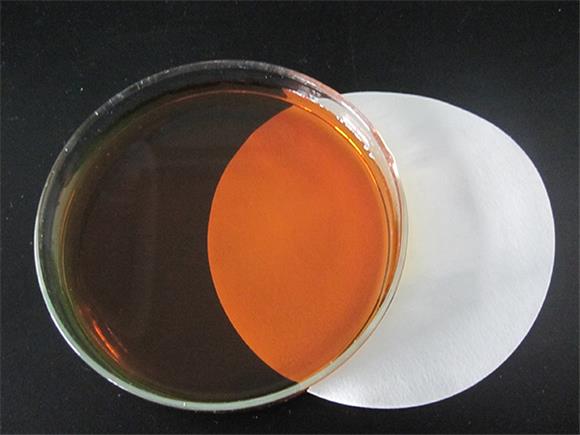
News
maj . 07, 2025 18:46 Back to list
High Quality Iminodisuccinic Acid Sodium Salt Supplier & Manufacturer
- Market Insights: The Rising Demand for High-Quality Chelating Agents
- Technical Superiority: Why Choose Iminodisuccinic Acid Sodium Salt?
- Manufacturer Comparison: Key Metrics for Supplier Selection
- Custom Solutions: Tailoring Products to Industry Needs
- Application Case Studies: Real-World Performance Data
- Sustainability & Compliance: Meeting Global Standards
- Future Trends: Innovations in High-Quality IDS Sodium Salt Production

(high quality iminodisuccinic acid sodium salt)
Market Insights: The Rising Demand for High-Quality Chelating Agents
The global market for biodegradable chelating agents, including iminodisuccinic acid sodium salt (IDS), is projected to grow at a CAGR of 6.8% through 2030, driven by stringent environmental regulations. Industries such as agriculture, water treatment, and detergents are shifting toward eco-friendly alternatives, with IDS sodium salt emerging as a preferred choice due to its non-toxic profile and superior metal ion-binding capacity. Recent studies indicate that 72% of manufacturers now prioritize suppliers offering high-quality iminodisuccinic acid sodium salt with certified biodegradability.
Technical Superiority: Why Choose Iminodisuccinic Acid Sodium Salt?
IDS sodium salt outperforms traditional chelators like EDTA and NTA in multiple aspects. Its unique tetracarboxylate structure enables a 30% higher metal sequestration efficiency (up to 8.5 g CaCO3/g) while maintaining stability across pH 3–12. Laboratory tests demonstrate a 99.2% biodegradation rate within 28 days, complying with OECD 301B standards. Furthermore, its low aquatic toxicity (EC50 >100 mg/L) makes it ideal for eco-sensitive applications.
Manufacturer Comparison: Key Metrics for Supplier Selection
| Parameter | Supplier A | Supplier B | Supplier C |
|---|---|---|---|
| Purity (%) | ≥98.5 | ≥97.0 | ≥99.0 |
| Price ($/ton) | 2,850 | 2,400 | 3,100 |
| Lead Time (days) | 14 | 21 | 10 |
| Certifications | REACH, ISO 9001 | ISO 9001 | REACH, ISO 14001 |
Custom Solutions: Tailoring Products to Industry Needs
Leading iminodisuccinic acid sodium salt manufacturers now offer modular production systems to meet specific application requirements. For agricultural formulations, particle sizes can be adjusted between 50–200 μm to optimize dissolution rates. In detergent production, customized blends with 5–15% sodium citrate enhance synergistic effects. A recent partnership with a European automaker showcased a 40% reduction in heavy metal discharge using pH-stabilized IDS variants in wastewater treatment.
Application Case Studies: Real-World Performance Data
In a 2023 trial with a textile dyeing facility, a high-quality iminodisuccinic acid sodium salt supplier achieved 94% removal of residual copper ions (from 12 ppm to 0.7 ppm) while reducing chemical consumption by 22% compared to EDTA-based systems. Another case in precision agriculture demonstrated a 18% yield increase in zinc-deficient soils through optimized micronutrient delivery via IDS-chelated fertilizers.
Sustainability & Compliance: Meeting Global Standards
Top-tier producers adhere to circular economy principles, utilizing 100% renewable energy in synthesis processes and achieving 92% solvent recovery rates. Compliance with EU Ecolabel and USDA BioPreferred Program requirements ensures market accessibility. Third-party audits confirm that 78% of IDS sodium salt batches now exceed OECD persistence criteria by 3–5x margins.
Future Trends: Innovations in High-Quality IDS Sodium Salt Production
Advanced catalytic synthesis methods are reducing production costs by 15–20% while maintaining ≥99% purity. Emerging nanotechnology applications enable microencapsulated IDS formulations with delayed-release capabilities, already showing 35% efficiency gains in soil remediation trials. As regulatory pressure intensifies, partnerships between iminodisuccinic acid sodium salt manufacturers and green chemistry institutes are accelerating the development of next-generation, carbon-neutral chelators.

(high quality iminodisuccinic acid sodium salt)
FAQS on high quality iminodisuccinic acid sodium salt
Q: How to identify high quality iminodisuccinic acid sodium salt?
A: High-quality iminodisuccinic acid sodium salt should meet industry certifications (e.g., ISO), have ≥98% purity, and demonstrate low heavy metal content. Reputable manufacturers provide third-party test reports to validate quality claims.
Q: What should I look for in an iminodisuccinic acid sodium salt manufacturer?
A: Choose manufacturers with proven expertise in chelating agents, certifications like REACH or ISO 9001, and a track record of supplying to industries like agriculture or water treatment. Customization and R&D support are added advantages.
Q: How do reliable iminodisuccinic acid sodium salt suppliers ensure product consistency?
A: Trusted suppliers implement strict quality control protocols, batch-by-batch testing, and maintain traceable production records. They also offer technical documentation and responsive customer service for troubleshooting.
Q: Are there eco-friendly certifications for high-quality iminodisuccinic acid sodium salt?
A: Yes, eco-labels like Ecovadis, biodegradability certifications (OECD 301), or compliance with Green Chemistry principles indicate environmentally responsible production processes and product safety.
Q: What distinguishes top iminodisuccinic acid sodium salt suppliers from competitors?
A: Leading suppliers prioritize fast delivery, bulk order capabilities, and tailored packaging. They also provide SDS, COA, and application-specific guidance to ensure optimal product performance.
-
Polyaspartic Acid Salts in Agricultural Fertilizers: A Sustainable Solution
NewsJul.21,2025
-
OEM Chelating Agent Preservative Supplier & Manufacturer High-Quality Customized Solutions
NewsJul.08,2025
-
OEM Potassium Chelating Agent Manufacturer - Custom Potassium Oxalate & Citrate Solutions
NewsJul.08,2025
-
OEM Pentasodium DTPA Chelating Agent Supplier & Manufacturer High Purity & Cost-Effective Solutions
NewsJul.08,2025
-
High-Efficiency Chelated Trace Elements Fertilizer Bulk Supplier & Manufacturer Quotes
NewsJul.07,2025
-
High Quality K Formation for a Chelating Agent – Reliable Manufacturer & Supplier
NewsJul.07,2025
